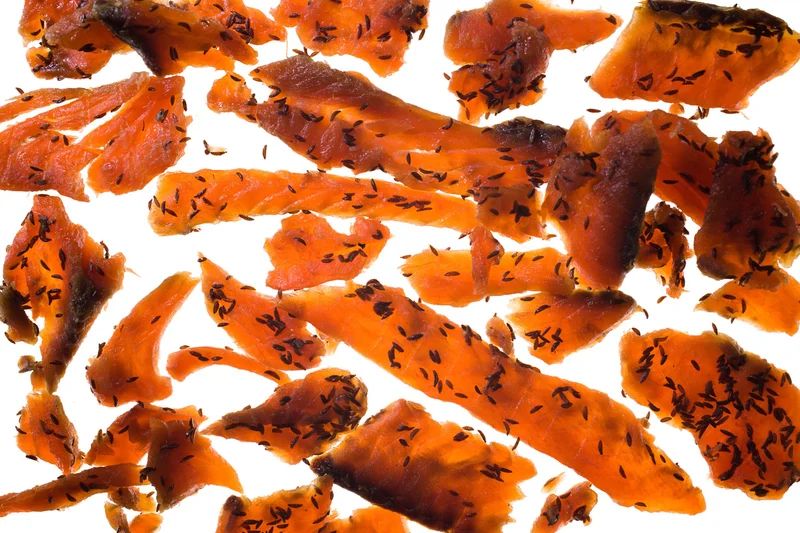Sure you can freeze your fishing bounty, but making jerky out of salmon is a delicious—and easy—way to preserve an especially good catch.
What to buy: In order to get nice long pieces of jerky, it’s best to work with a side of salmon instead of individual fillets. If you catch the salmon yourself, this shouldn’t be a problem; if you buy it, just ask your fishmonger for a side—and don’t forget to request that he or she remove the skin and pin bones as well. See our guide to types of salmon for more on the different varieties of the fish.
Game plan: If you have a conventional oven, you can proceed with the recipe as laid out below. If you have a relatively new, digital oven, look to see if you have a “dehydrate” option under the convection setting—it will ensure even air circulation as the salmon dries.
The jerky will last up to 1 month when refrigerated in an airtight container. Bring to room temperature before eating.
This recipe was featured as part of our Make Your Own Jerky project, as well as our DIY Holiday Gifts Advent Calendar.
- Yield: 1 pound
- Difficulty: Easy
- Total: 3 hrs 25 mins, plus freezing and curing time
- Active: 15 mins
Ingredients (4)
- 1 (3-pound) wild salmon side, skinned and pin bones removed
- 1 cup granulated sugar
- 1/4 cup caraway seeds
- 1/4 cup kosher salt
Instructions
- Arrange salmon flat on a plate or baking sheet, cover with plastic wrap, and freeze until firm, about 2 hours.
- When fish is ready, place perpendicular to you on a cutting board and slice vertically (the opposite way you’d cut a fillet) into 1/4-inch-thick strips. (You want the strips to be as uniform as possible to ensure even drying.)
- Place all remaining ingredients in a large baking dish or resealable plastic bag and mix until evenly combined. Place salmon strips in the cure and toss thoroughly to coat. Cover and place in the refrigerator for 12 hours.
- Remove fish from the refrigerator, place in a colander to drain off any excess moisture, and let come to room temperature, about 30 minutes. Meanwhile, remove the racks from the oven, completely line the bottom with aluminum foil, and heat to 160°F.
- Spray the oven racks with nonstick cooking spray, blot any excess moisture from the salmon with paper towels, and arrange the fish strips horizontally across the racks, leaving at least 1/2 inch of space between the strips.
- Place the racks back in the oven and dehydrate the salmon until dry, darker in color, and, when bent, it gives way before breaking but doesn’t snap, about 3 hours.
- Blot any oil or moisture from the jerky with paper towels and cool completely on the racks before storing.


